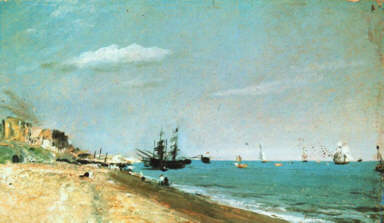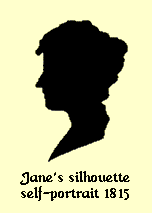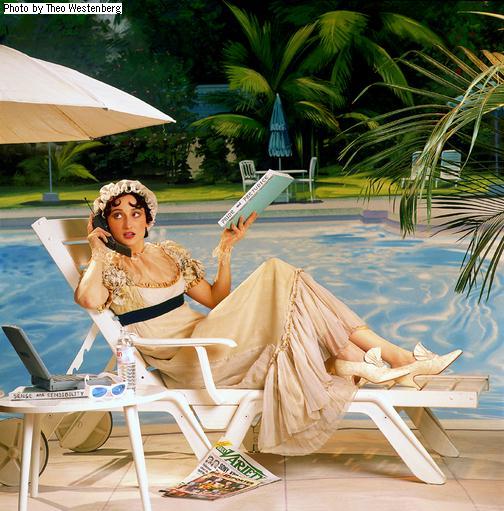Lecture VII--The Novel and the Middle Class - Jane Austen Tells us How
Unknown Writer of the Week: Madame de La Fayette
Mme de La Fayette Read More About The Princess of Cleves 1659 Portrait de Mme de Sévigné; 1662 La Princesse de Montpensier; 1669-70 Zaide; 1678 La Princesse de Clèves; 1720 Histoire de Mme Henriette d'Angleterre; 1720 Relation de la Mort de Madame; 1724 La Comtesse de Tende; 1731 Mémoires de le Cour de France pour les années 1688 et 1689; 1731 Correspondance
The Middle Class The Regency Period - Austin's Time Other Regency Authors Jane Austen and Life Itself The Austen Novels
The Middle Class
We tend to take the middle class for granted, but it might be illustrative to stop and take a look at what constituted probably the most open field for writers, and fertile ground for readers in the early 19th Century. Again, there are always historical cross-currents present. We have the growing Romantic Movement - characterized by Madame de La Fayette, Ann Radcliffe, Wordsworth, Mary Shelley, Percy Shelley, Keats, etc. And, while we are looking at the ever-so-rational Jane Austen in this lecture, we will return to the growing Romantic Movement in future lectures. We also have the Realists - characterized by Austen, Frances Trollope, George Eliot, and others. Some of our writers were always on the fence - Mary Wollstonecraft, and even Aphra Behn. The Middle Class always swam in these currents, now heavily romantic, the next moment, determinedly pragmatic. This vacillation is represented in the literature they wrote and the literature they read, for the most part. This ambiguity can be traced to the peculiar situation of the Middle Class in history and to, for women, their unstable position in society.
Class, by the Nineteenth Century, becomes a thing that is about money, not land anymore. Certainly, there were the great fortunes and the old aristocracy - an aristocracy that still held sway - but more and more, you could buy a coat-of-arms, country houses came onto the open market, and the fastest way to make money was in trade, not from the poor peasants (they had become an inconvenience except as they represented a mobile labor force). While the interface between the upper classes and the upper-middle class was becoming more porous, so was the boundary between the new middle class and the "lower classes." Nonetheless, this mobility of station (the whole point of many of the US Constitution principles), did not make people feel comfortable. Rather, the hysteria of moving down was born. In the old, medieval, class-bound society, as we have remarked before, everyone knew his or her "place." If you were born a peasant, it was not very possible to change that status. Conversely, if you were born a nobleman, you were always a nobleman. [Here we might mention clothes, since they will come up later. In pre-revolutionary France, for example, noblemen were allotted a certain number of new outfits a year, by law, as long as they could afford them. Minor nobility had the opportunity to order fewer fine clothes. Commoners were not allowed to have fine outfits made for them, on the theory that they might impersonate a nobleman!!] In the Jane Austen novels, we are not only looking at the hopes these women might have for marrying into landed upper class society, but also the rampant fear of slipping into the ranks of the lower classes. You will notice how often the mention of income or salary occurs! The Middle Class of England at this time actually sets the standards that will persist for quite a long time - even until today, really. One tenet of the Middle Class is, of course, improvement of the family's fortunes by marriage. Another is the idea of self-improvement. A third, the notion of appropriate use of leisure time. A fourth, keeping up appearances at all costs. A fifth, and tied in somewhat with new Protestant ideas, the invisible record-keeper (this is the idea that some Being in the sky is keeping score!). If we think about many of the constraints that were put upon women (not new, but justified in a new context) - we can see that they relate directly to the concerns of the Middle Class for protection from downward mobility. The Regency Period - Austin's Time
Meanwhile, de Sade was publishing his stuff just as Byron and Shelley were experimenting with drugs, innovative domestic arrangements, and radical chic. The propaganda of anarchy and class-revolution was everywhere, the feminists were out in full force, and the great founders of economic theory - including the proto-communists - were just beginning their publication. James Watt (1736-1819) was unwittingly inaugurating the Industrial Revolution. And, all the while, Francisco Goya was capturing some of the images of the period that was being set to music by Mozart (1756-1791) and Beethoven (1770-1827), and just as Blake's (1757-1827) "tyger" was burning bright. But no tiger blazed as bright as the one seated at her writing desk in the Chawton Cottage night. Clothing in the Regency Period It never does for us to ignore the role of clothing in women's lives. The Regency was one of the few periods when women were not constricted or corseted into the "wasp waist" look. They could also wear somewhat comfortable shoes for a few years (we know how important that is, think if our foot-bound Chinese sisters, a full 800 years into foot binding by now). For a comparative look at women's fashion thru the ages, click here: Fashion Through the Ages.
Other Regency Authors Most English novelists in Jane Austen's day (1775-1817) were women. (See Cathy Decker's excellent survey of women writers of that time.) There were Ann Radcliffe (1764-1823), Fanny Burney (1752-1840), Elizabeth Inchbald (1753-1821), Maria Edgeworth (1767-1849), and Mary Wollstonecraft (1759-1797) to name just a few female authors. These women were slightly older and first published slightly before Jane Austen. Of course, there was a slightly younger female author, Wollstonecraft's more-famous daughter Mary Shelley (1797-1851). Well, those are the usual suspects, but the one I think everyone misses - the one I think the most important is Madame de La Fayette (1634-1693). Madame de La Fayette wrote The Princess of Cleves. The main characters are the "Princess", Madame de Cleves, her husband, Monsieur de Cleves, and the
man she loves - and who loves her - the Duc de Nemours. Perhaps the basic story is at least as old as the
King Arthur legends. Certainly the story would be echoed in The Sorrows of Young Werther
and Anna
Karenina. While we may have difficulty establishing Madame de La Fayette's influence on Jane
Austen,
we should have no trouble establishing her influence on Goethe and Tolstoy.
|
|
Literature 45 - Women in Literature : Marjorie C. Luesebrink, MFA Contents: Announcements // Discussion Page // About Your Class // Class Syllabus // Lecture Notes // Discussion Group // Reading List // Recommended Reading // Assignments // Resources and Web Sites // Grading Policies // Contact Your Instructor
|








